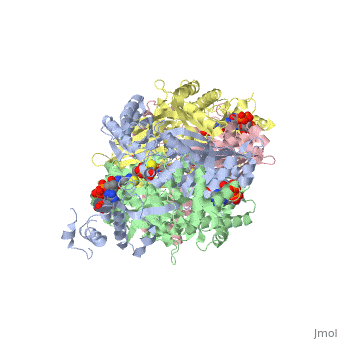JMS/sandbox14
From Proteopedia
Your Heading Here (maybe something like 'Structure')
Elephants can hold their breath for 2 minutes, but whales can hold their breath for 60 minuntes - and they do, migrating underwater around the world. To get a clue as to why whales can hold their breath for so long, several researchers attained tissue samples from hundreds of aquatic and terrestrial mammialian species (mainly from museum collections). They measured the concentration of myoglobin, the protein that stores oxygen in muscle tissue for times of muscle activity, and also sequenced each specie's myoglobin gene, and used to sequence - as well as eletrophoresis of the protein, when possible - to calculate the net charge of each myoglobin protein. Amazingly they found that independently, aquatic mammals across the mammalian phylogeny had acquired their ability to hold their breath, by increasing the concentration of myoglobin, through increasing the net charge of myoglobin. In real values, typically, terrestrial mammal's myoglobin has a solubility of 20 mg/g tissue and that is the level of myoglobin found in most terrestrial mammals tissue. But whales and other aquatic mammals far exceed this solubility limit - whales have 70 mg/g - and this overcoming the solubility contrains may be traced back to an increase in the net charge of myoglobin - from around +2 in terrestrial animals to around +4 in aquatic animlals.
However, a 3-fold increase in concentration of myoglobin ought to result in a similar fold increase in max time of breath holding, and the researchers determine that body mass has also been a critical contribution to enabling breath holding, with the overall equation for the contribution of body mass and myoglobin net charge as follows: log (maximum time underwater) = 0.223*log(body mass) + 0.972*log(myoglobin net charge) + 0.891
Molecular Tour
The ability of increasing net charge to enable higher solubility is a known phenomena, and this study is consistent with previous reports. The aquatic animals have increased their net charge in a variety of ways - different combinations of amino acids switches. We present one such manifestation of this overall trend, by comparing the elephant and whale myoglobin structures.
| |||||||||||

